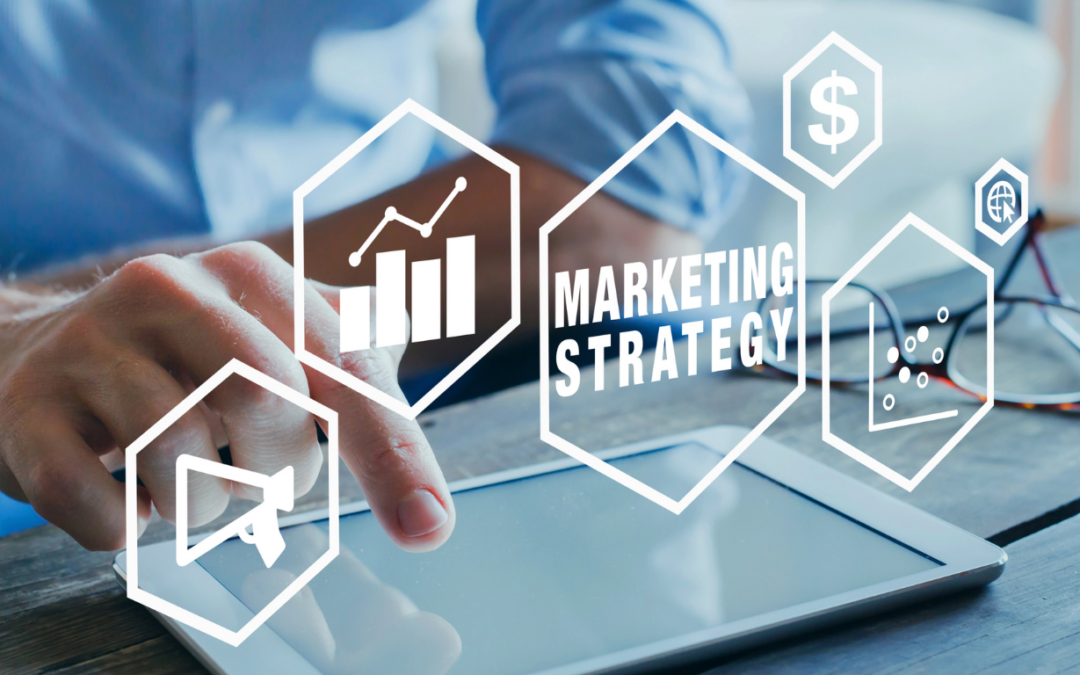
by Bill Poole | Sep 6, 2023 | EOS, Marketing, Strategy
The four elements of the Marketing Strategy component of the Vision/Traction Organizer™ of the Entrepreneurial Operating System® provide a fantastic framework for growing your business. If you don’t remember off the top of your head, the four elements are:
- Your target market/The list
- 3 Uniques™
- Your Proven Process
- Your Guarantee
The first step in leveraging this framework is to ensure that you do a thorough job of documenting each one of the four elements. But that’s still just the beginning! As is the case with most of the EOS® tools, the power is in how you leverage these on an ongoing basis. How do you go about doing that? For starters, everyone in your organization should be able to recite each of the four elements at any given moment.
Below are some ideas as to how you can put the different elements in to work for you and your B2B business. A brief introduction for each is included, but I’m not going to spend much time talking about the elements themselves (your EOS Implementer® can help with that!).
Target Market/The List
The Target Market refers to the clients that are ideal fits for your business. This includes basic information like what industry they are in, what geography they are in, and other descriptive characteristics. In the B2B space, this should also include who the key players are inside of those businesses. Here’s some ideas around taking the next step in providing value to your Target Market and growing your business:
- Your target market is identified and an ideal client profile is created that represents the businesses that are ideal fits for your products and services
- Everyone in your business can communicate the profile of your ideal client and the desired outcomes that your organization delivers to those clients
- Key functional contacts that work in businesses that fit your ideal client profile are identified and documented and the specific outcomes they desire are identified and documented
- 100% of the organizations that fit your ideal client profile are identified in your CRM
- 100% of key functional contacts within your ideal client organizations are identified in your CRM
- A sales and marketing strategy is designed and documented with the goal of engaging with 100% of the key functional contacts within organizations that fit your ideal client profile
- You are able to measure engagement levels with all of these functional contacts
3 Uniques™
Your 3 Uniques™ provide a high-level outline for what differentiates you from your competitors. While you may share a unique or two with other providers, your 3 Uniques™ should not be shared by any other business. Here are some thoughts around putting your 3 Uniques™ to work for you:
- Your entire organization can articulate your 3 Uniques™ and why they matter to your ideal client
- 3 Uniques™ are clearly represented in some way on your website
- 3 Uniques™ come to life in all sales and marketing collateral
- Your sales process is designed to leverage your 3 Uniques™
- You have shareable case studies that show how your 3 Uniques™ are directly benefiting a client’s organization
- Content that communicates the value of your 3 Uniques™ is regularly shared with your audience
- Proposals are structured to clearly communicate how the 3 Uniques™ will benefit your prospects
Guarantee
Simply stated, your guarantee should remove the most significant barriers for your target market to do business with you and it should support your value proposition. Here are some things that you can do to ensure your guarantee is properly communicated to your target market:
- Your guarantee clearly addresses and overcomes the most common challenge that prospects have in engaging with your business
- Your guarantee clearly articulates the consequences of your company not fulfilling on your end of the guarantee
- Your guarantee is communicated on the homepage of our website
- Your guarantee is communicated on all sales proposals
- You have referenceable examples where we a client leveraged your guarantee satisfactorily
- Your guarantee is in the footer of your emails
Proven Process
Your Proven Process should provide context and clarity as to how your ideal clients will navigate their experience with your business. At Convergo, We see the Proven Process as a subset of the Ideal Client Experience. We feel strongly that the Ideal Client Experience is the foundation for aligning to your entire business to maximize the value that you provide to your clients. Here are some thoughts around the Proven Process in motion:
- Your proven process has an internal brand and 100% of your team can recite your proven process and their role in the process
- There is a external version of your proven process that shows prospects how they will engage with your business if they were to become a client
- The sales and marketing arms of your organization are aligned around your proven process with the goal of creating an amazing client experience
We’d love to hear from all of you how you are bringing the marketing elements of your V/TO™ to life in your organization.

by Bill Poole | Mar 21, 2022 | EOS
Series: How To Make Revenue Growth Predictable In Uncertain Times
Part 1 (this article)
Part 2
Part 3
Creating steady revenue growth can feel impossible during uncertain times. The headwinds of hiring challenges, price increases, and supply chain issues seem to threaten growth goals. While you can’t change the circumstances, you can be proactive in setting your company up for success, even in uncertain times.
Over the next three articles you’ll discover three ways you can make revenue growth predictable in uncertain times. These aren’t magic bullets. Instead, they are three ways to develop consistency and effectiveness by optimizing your marketing and sales.
Focus Your Message
The first way to make revenue growth predictable is to focus your message.
Hang out in any sales training long enough and you will hear Theodore Roosevelt’s famous words: “Nobody cares how much you know until they know how much you care.” This profound truth is violated by the majority of marketing and sales messages.
The marketing message of most companies reads like this: Our great company sells our incredible products backed by our award-winning customer service. You should choose us because we are the best!
These things are fantastic. I’m proud of you. But nobody cares how much you know, how great your company is, how incredible your product is and how amazing your customer service is. At least not yet. What they care about first is that you care about them.
When we say “Customer First!” in our marketing and then go on to brag about how great our company is we show that the thing that actually sits in first place is our company. Buyers see through this.
Saying “Our company is a customer first company,” is like saying to everyone you meet, “I’m so awesome because I care a lot about other people!” Good for you, but it seems to me you care an awful lot about yourself. Why not just care for other people. By doing this, you demonstrate what you believe.
How do you demonstrate your care? You focus your message on what’s important to them.
Simply put, you make sure that your marketing and sales messaging talks about the outcomes they want.
In Revenue Growth Engine (Get your Free Copy here) I say that buyer’s don’t buy products or services, they buy the outcomes those products and services deliver.
What is an outcome? You know your message is focused on an outcome when the potential buyer says in their head something like this:
- This could help me achieve one of my top goals!
- This could help me solve a nagging problem!
- I’ve been looking for this for a long time. Finally!
You know your message is focused on an outcome when it is specific and not full of corporate adjective soup.
“Our solution helps clients improve productivity, enhance security, and increase user satisfaction.”
Noise. Static.
Is it true? Maybe.
Does it sound good? Sure.
Is it specific and relevant to the outcomes your buyer wants? Nope.
So you get ignored. And when you get ignored you don’t get the opportunity. When there is no opportunity there is no new revenue. Sure, you may get some referrals from happy clients. But when it comes to predictable revenue growth you become largely ignored by the market in general.
- Focusing your message on the outcomes your buyers want gets you the attention you need to sell.
- You demonstrate that you care about the outcomes they want.
- You show that it is about them and not you.
- You communicate in a tangible way that their business and personal goals are important to you.
- You demonstrate that you focus on your clients and not on yourself.
Benefits of Focusing Your Message
What does focusing your message have to do with predictable revenue growth?
1. You Get Attention in a Crowded Marketplace
The amount of static noise is astounding. Our minds are bombarded with thousands of messages every single day. To survive we are highly trained at tuning things out. We also have very sensitive BS meters.
Only two things will get my attention:
- Something that will help me achieve a goal that’s important to me.
- Something that will help me solve a problem.
An unfocused message does neither. Therefore you get no attention. No attention, no sale.
2. You Get Found Online
Not only are buyers filtering out the noise, many of them are actively searching for things that will help them achieve their outcomes.
None of your prospective clients are asking Google, Siri, or their social networks, “Who is an awesome company that has incredible products and outstanding service?”
Instead, they are searching for answers to questions. They are looking for recommendations on how to solve their problem or achieve their goal. They are looking for ways other people have done it before.
When you actually take the time to answer these questions, you get found. The title of Marcus Sheridan’s bestselling book sums it up: They Ask, You Answer.
Helping your buyers find answers to your questions gets you found. This helps create more predictable revenue growth.
3. You Get More At Bats
Once you get attention and get found, you get more at bats for your sales team. However, I think it’s even better than getting more at bats.
They say sales is a numbers game. In many ways that is true. To use a baseball analogy, the more times I get up to the plate and swing, the higher the probability I will get a hit. More at bats are better.
Focusing your message gets you more at bats. This helps create more predictable revenue growth.
4. You Increase Your Close Rate
Sticking with the baseball analogy, what’s even better than more times at the plate is if I can get an easy pitch. I don’t want to swing at a 99 mile-per-hour fastball. I want to swing at a nice, easy pitch. My chances of getting a hit are much higher.
When you focus your message and lead with outcomes, not only do you get found and get attention, the pitches coming at you are much easier to hit. Your sales team does less “showing up and throwing up” and “hoping they find a pain point” Instead, they are able to have a discussion about the specific outcomes the buyer wants.
The more you focus the message on the outcomes your buyers want the more you increase your close rate and the more predictable your revenue growth becomes.
5. You Build Trust
We’ve all heard the old sales adage, “Buyer’s buy from people they know, like, and trust.” How do we begin to build trust? We show that we care about them while also demonstrating our competency.
Here is how you can begin to build trust. Focusing your message on the outcomes the buyer wants shows that you care about what’s important to them. Providing insight and ideas on how they can achieve their goals or solve their problems demonstrates your competency. This forms the foundation of trust.
My friend and Selling From the Heart Podcast co-host, Larry Levine, sums it up this way: “More trust, more sales.” The more you focus your message, the more you build trust. This helps create predictable revenue growth.
How To Focus Your Message
How do you focus your message? It begins by understanding the outcomes your buyers want.
Don’t overcomplicate this. Go to your current clients and ask them about their business. What are your top goals? What are your biggest challenges. Listen and learn.
Take what you learn and compare it to your marketing and sales message. Do these questions get answered on your website, blog, podcast, landing pages, or events? Do your sales talk tracks, tools, and collateral lead with this message?
The more you focus your message on the outcomes your buyers want, the more attention you will earn. You’ll get found giving you more at bats. You’ll have better conversations giving you a higher close rate as you build trust.
Continue reading part 2 in the series of How to Make Revenue Predictable in Uncertain Times.

by Bill Poole | Nov 10, 2020 | EOS, Marketing
Smart companies that use EOS® incorporate values to guide strategy and people decisions. Values also provide a foundation for effective marketing and sales.
1. Allow Your Values To Refine Your Ideal Client Profile
There are 7.8 billion people on the planet. There are hundreds of millions of businesses. Not all of these people and companies are a great fit for your business.
You use your values to choose and evaluate employees. Why not use your values to define your Ideal Client Profile? Will you sell to companies that don’t align with every single one of your values. Practically speaking, the answer is yes. However, when you are deciding who to target, why not target companies that align with your values?
Ultimately your team will be happier serving clients that align with their values. Your clients will be happier as well, leading to long term relationships, less friction, and lower costs.
As we lead our clients through Revenue Growth Planning Workshops we help them define their Ideal Client Profile. Some of this profile is demographic such as company size, industry, or geography. Perhaps the most important part is psychographic. Part of that psychographic profile can include your company values.
2. Integrate Your Values Throughout Your Messaging
Read most corporate messaging and you’ll discover what I like to call business buzzword soup. Here’s an example of buzzword soup from a technology company: “We help companies maximize their efficiency while reducing expenses and strengthening cybersecurity.” Is this statement true? Sure. Does it resonate with clients and prospects? Nope. It’s corporate white noise.
What if you could restate your core message using the language and spirit of your values. For example, let’s say the above company’s values were trust and teamwork. They might say:
- “Trust is the bedrock of business success. When your business is hacked by cybercriminals, you risk losing more than revenue from lost productivity or ransom payments, you risk losing the trust of your customers. That’s why we’re committed to protecting your greatest asset: the trust of your customers.”
- “Teamwork does make the dream work. However, it’s hard to work as a team when you don’t have the tools to communicate. That’s why our clients enjoy the way we empower their teams with technology that empowers teamwork. Then, we back it up with the support of our team.”
The two examples above said exactly the same thing as the corporate buzzword soup. They just presented the message in the context of values.
3. Use Your Values to Refine Your Client Experience
The authors of The Experience Economy make the case that client experience is the most untapped source of value and competitive advantage. What’s it like to be your client? How could you change your client experience to more closely reflect your company values?
At Convergo, one of our core values is “fun”. We believe that as we are working to help our clients grow, the process of business should be enjoyable. This value informs our hiring decisions. It also permeates our team meetings. It also shapes our client experience.
As we continually improve the stages of our Ideal Client Experience, we are asking ourselves, “How could we make this more fun for us and for our clients?” Just asking this question is fun.
As we enhance our client experience, we are doing it in a way that aligns with our core values. In addition to fun, our other core values are learning and transparency. We continue to incorporate learning experiences into the stages of our client experience. Throughout our client experience, we look for ways to demonstrate transparency.
Your company values can define and improve your marketing and sales. As you weave your values into your Ideal Client Profile, message, and Ideal Client Experience, the values come to life for both your team and your clients.

by Bill Poole | Nov 5, 2020 | EOS, Marketing, Sales
One way to grow your EOSⓇ business faster is to attract and cross-sell ideal clients. These are the types of clients that appreciate what you do and can buy everything that you sell.
Unless you have a limitless marketing budget and massive sales team, trying to sell to everyone is a recipe for failure. Both your message and efforts get diluted, lost in a vast ocean of noise. Plus, you end up wasting a lot of time talking to prospects who really don’t value what you do.
It’s kind of like your garden hose. When you first turn it on, there is a stream of water, but not much pressure. When you add a nozzle to the end, you can focus the stream of water and create pressure. If you want to kick it up a notch, connect your hose to a pressure washer.
The more you focus your stream of water, the more effective you can be. Similarly, the more you focus your marketing and sales efforts around ideal clients, the faster you can grow your business.
In Traction, Gino Wickman talks about building “The List”. We call the companies on this list, “Ideal Clients.”
Let’s explore how to identify ideal clients and focus your efforts to grow faster.
Building The List
In our Revenue Growth Workshops, we lead teams through the process of building their ideal client profile. At the end of the process, they have identified three things:
- Value: The revenue potential of an ideal client over 10 years
- Description: The characteristics of an ideal client
- Data Profile: The data profile of an ideal client
With the description and data profile in mind it is possible to identify “The List” talked about in Traction.
In reality, you should have two lists:
- Ideal Clients: Current clients that fit the profile of being an ideal client.
- Ideal Prospects: Target companies that fit the profile of an ideal client.
With your ideal client profile, it becomes possible to build a list of ideal prospects. These refined lists can be created with the help of data providers who can source information on the specific companies that fit your ideal client profile.
Once you know the companies that fit the profile, you also need data on the key decision makers and influencers in each of these companies.

What To Do With The List
These ideal clients and prospects should be clearly marked in your CRM and marketing automation systems. This makes it possible to track metrics around sales and marketing processes such as:
- Sales
- 100% Management of ideal clients
- 100% Coverage of ideal prospects with prospecting
- Marketing
- Communication cadence with ideal clients
- Outbound marketing to ideal prospects
Processes can be created, trained, and documented in each of these four core areas.
Step one is to get clear about your list. The more focused your Ideal Client Profile, the more you can focus your marketing and sales efforts. This will help you accelerate your growth.

by Bill Poole | Sep 29, 2020 | EOS
The four elements of the Marketing Strategy component of the Vision/Traction Organizer™ of the Entrepreneurial Operating System® provide a fantastic framework for growing your business. If you don’t remember off the top of your head, the four elements are:
- Your target market/The list
- 3 Uniques™
- Your Proven Process
- Your Guarantee
The first step in leveraging this framework is to ensure that you do a thorough job of documenting each one of the four elements. But that’s still just the beginning! As is the case with most of the EOS® tools, the power is in how you leverage these on an ongoing basis. How do you go about doing that? For starters, everyone in your organization should be able to recite each of the four elements at any given moment.
Below are some ideas as to how you can put the different elements in to work for you and your B2B business. A brief introduction for each is included, but I’m not going to spend much time talking about the elements themselves (your EOS Implementer® can help with that!).
Target Market/The List
The Target Market refers to the clients that are ideal fits for your business. This includes basic information like what industry they are in, what geography they are in, and other descriptive characteristics. In the B2B space, this should also include who the key players are inside of those businesses. Here’s some ideas around taking the next step in providing value to your Target Market and growing your business:
- Your target market is identified and an ideal client profile is created that represents the businesses that are ideal fits for your products and services
- Everyone in your business can communicate the profile of your ideal client and the desired outcomes that your organization delivers to those clients
- Key functional contacts that work in businesses that fit your ideal client profile are identified and documented and the specific outcomes they desire are identified and documented
- 100% of the organizations that fit your ideal client profile are identified in your CRM
- 100% of key functional contacts within your ideal client organizations are identified in your CRM
- A sales and marketing strategy is designed and documented with the goal of engaging with 100% of the key functional contacts within organizations that fit your ideal client profile
- You are able to measure engagement levels with all of these functional contacts
3 Uniques™
Your 3 Uniques™ provide a high-level outline for what differentiates you from your competitors. While you may share a unique or two with other providers, your 3 Uniques™ should not be shared by any other business. Here are some thoughts around putting your 3 Uniques™ to work for you:
- Your entire organization can articulate your 3 Uniques™ and why they matter to your ideal client
- 3 Uniques™ are clearly represented in some way on your website
- 3 Uniques™ come to life in all sales and marketing collateral
- Your sales process is designed to leverage your 3 Uniques™
- You have shareable case studies that show how your 3 Uniques™ are directly benefiting a client’s organization
- Content that communicates the value of your 3 Uniques™ is regularly shared with your audience
- Proposals are structured to clearly communicate how the 3 Uniques™ will benefit your prospects
Guarantee
Simply stated, your guarantee should remove the most significant barriers for your target market to do business with you and it should support your value proposition. Here are some things that you can do to ensure your guarantee is properly communicated to your target market:
- Your guarantee clearly addresses and overcomes the most common challenge that prospects have in engaging with your business
- Your guarantee clearly articulates the consequences of your company not fulfilling on your end of the guarantee
- Your guarantee is communicated on the homepage of our website
- Your guarantee is communicated on all sales proposals
- You have reference-able examples where we a client leveraged your guarantee satisfactorily
- Your guarantee is in the footer of your emails
Proven Process
Your Proven Process should provide context and clarity as to how your ideal clients will navigate their experience with your business. At Convergo, We see the Proven Process as a subset of the Ideal Client Experience. We feel strongly that the Ideal Client Experience is the foundation for aligning to your entire business to maximize the value that you provide to your clients. Here are some thoughts around the Proven Process in motion:
- Your proven process has an internal brand and 100% of your team can recite your proven process and their role in the process
- There is a external version of your proven process that shows prospects how they will engage with your business if they were to become a client
- The sales and marketing arms of your organization are aligned around your proven process with the goal of creating an amazing client experience
We’d love to hear from all of you how you are bringing the marketing elements of your V/TO™ to life in your organization.

by Bill Poole | Nov 14, 2019 | EOS
Over the past few months, I’ve had the privilege of leading many management teams through Revenue Growth Workshops to make a plan to drive organic revenue growth. My favorite companies to work with are ones that use Gino Wickman’s EOS (Entrepreneur’s Operating System) Traction methodology to run their business.
Several years ago at Convergo we realized that we needed a way to align our growing team. With more people on board, things were falling through the cracks. Team members, clients, and vendors were starting to get frustrated.
I don’t remember how I found the book, Traction. What I do remember is seeing an endorsement from Rob Dube, President of Image One, at the beginning of the book. This got my attention! We devoured the book and grabbed on to EOS and it began transforming our company.
Since then, we’ve met many office technology dealers and managed IT companies that use Traction to improve their business. Our friends at Great America Financial Services even coach dealers in how to implement Traction.
When it comes to building and executing a Revenue Growth Strategy, Traction companies are a great fit for five reasons:
1. They Have Written Goals
The EOS process challenges companies to write goals on a 10-year, 3-year, 1-year, and 90-day horizons. Traction companies know where they want to go. This is recorded on their VTO (Vision Traction Organizer). When it comes time to make a revenue growth plan, the 3-year revenue goals are documented and agreed upon. This stands in contrast to other dealers whose goals are less specific: “We’d like to get to 15 million.” Goals are dreams with a deadline. Traction companies have real growth goals.
2. They Have Defined Values
When working closely alongside a client’s marketing and sales teams, it’s important that there is value alignment. When we work with Traction companies, we know what their values are. We are also transparent about our values. If there isn’t value alignment, we know upfront and can recommend the company find marketing and sales enablement partners that fit their culture. If there is alignment, we can walk in with confidence, knowing our teams will work well together.
3. They Understand Incremental Improvement
Rome wasn’t built in a day. Neither is a great Revenue Growth Strategy. When it comes time to implement a plan, Traction recommends companies chunk their improvement activities into 90-day rocks. This means that every 90 days the company will focus on getting a few things done rather than trying to do everything at once. Once one rock is in place, you go on to the next one. We deliver marketing and sales enablement services in 90-day sprints.
4. They Appreciate Change Management and Coaching
Traction companies seem to appreciate the reality that you don’t just tell your team about a change and expect them to adopt it. Change needs to be managed. New ways of doing things need a change management plan. They need to be rolled out strategically. And, they need ongoing coaching. For example, when we roll out a Target Account Coverage Plan, it takes more than building some prospecting sequences and doing some Fanatical Prospecting training. There needs to be ongoing coaching of the reps and the management team to make sure the new process sticks. When there is no change management plan or ongoing coaching, the investment is wasted, and even worse, the opportunities are missed.
5. They Value Scorecards
Traction taught us to measure leading indicators. Our key metric with our Revenue Growth Strategy clients is a little different than most marketing companies or sales training partners. We track our client’s revenue growth: number of customers and revenue per customer. Then, we scorecard four key leading indicators related to net-new and cross-selling. (We can explain more when we talk.) The thing we like about working with Traction companies is that they are used to scorecards.
There are many more benefits to working with Traction companies. Their management teams communicate regularly and are on the same page. They are used to honest conversation. They have a cascading message strategy to communicate the vision with their team. Most of all, when a company uses Traction, we know that they are committed to working together to drive profitable growth.
If you use Traction, we’d love to talk with you about how you can build a plan to drive revenue growth. Click here to set up a confidential conversation.
If you don’t use Traction, we encourage you to check it out. It’s an incredibly valuable tool that can help you build a great company.
For more growth ideas, check out this article: Consistent Execution: The Secret To Revenue Growth







